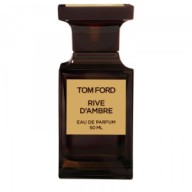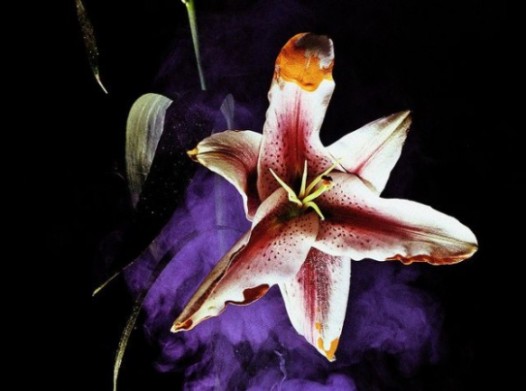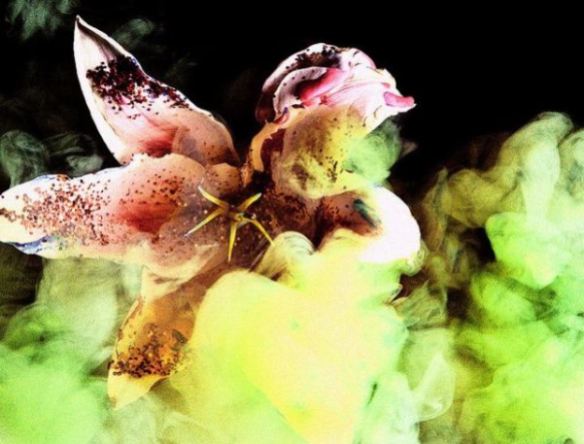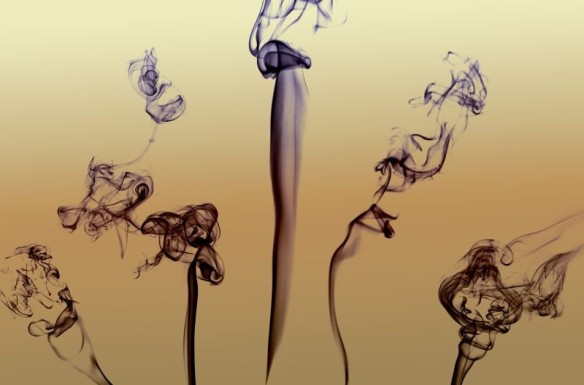Bright citruses turned to softened amber gauziness. That’s the essence of Rive d’Ambre, the latest Private Blend fragrance from Tom Ford. It is part of a brand-new collection of fragrances within his Private Blend line, and was just released in July 2013. The collection is called Atelier d’Orient, and consists of four perfumes: Shanghai Lily, Plum Japonais, Fleur de Chine and Rive d’Ambre.
None of the new Atelier d’Orient fragrances are listed yet on Tom Ford’s website, but, according to the Moodie Report and press copy, Tom Ford’s inspiration for Rive d’Ambre was the way that “precious citrus fruits” are a “talisman of good fortune in Asia[.]” As Ford apparently told the Moodie Report:
‘Rive d’Ambre is inspired by the tradition of presenting precious citrus fruits as gifts,” revealed Ford. “True to my nature, the sparkling fruits are wrapped in rich and warm sensuality.’
That last bit of egoism made me roll my eyes, as did the press copy used by Neiman Marcus for its description of Rive d’Ambre: “Tom Ford Rive d’Ambre is a golden-toned eau de cologne with a veil of colonial elegance.” Colonial elegance? I’m not going to touch that one with a ten-foot pole, but my thoughts are slightly sardonic.
Rive d’Ambre is an eau de parfum that was created by Olivier Gillotin of Givaudan, and its notes — as compiled from Fragrantica and Surrender to Chance — include:
bergamot, lemon, bitter orange, tarragon, cardamom, spearmint, benzoin, pear wood, cognac, tolu balsam and amber.
Rive d’Ambre opens on my skin with a burst of freshly squeezed lemon and bergamot, followed by squirts of slightly bitter oil from the skin of a zested orange that is tart, sweet and bright, all at once. There is also a ton of pepper from ISO E Super, and a hint of some fresh, green herbs that only faintly and vaguely resemble tarragon. Rive d’Ambre has the brisk, very fresh, clear-as-a-bell opening of a citrus cologne that has been modernized to remove any barbershop nuances. The crispness is beautifully bright and refreshing.
It takes less than three minutes for Rive d’Ambre to start to soften, and for its edges to start to blur. The fragrance never had a roar to begin with, but it’s turned into a very muted, quiet meow in an astonishingly brief amount of time. In fact, it felt as though the notes were slipping away, out of my grasp, and vanishing into the air, so I actually applied a second dose, for about 4 very large smears, all in all. The same result ensued, even with the greater quantity. Clearly, Rive d’Ambre is meant to be a muted, discreet hint on your skin, and nothing more. Fifteen minutes in, Rive d’Ambre is a soft haze of citruses that are starting to grow warmer, sweeter, and more golden. The fragrance now feels less like a crisp cologne, and more like a slightly ambered eau de toilette strongly infused with citruses. It’s pretty, but it’s also neither very distinctive, nor very original.
At the end of the first hour, Rive d’Ambre starts to change. From a distance, the fragrance still smells like citruses with a soft, warm glow. Up close, however, if you really, really inhale forcefully at your arm, you can detect a slight woodiness stirring at the base. There is also a really beautiful herbal note that sometimes resembles spearmint, and, at other time, a more pure, sweet, herbal mint. It’s one of my favorite parts, especially given the strong lingering taint of ISO E Super in the fragrance. Eventually, a new note appears in the base, though it’s as soft and muted as everything else to do with Rive d’Ambre. It’s a hint of dry, but boozy, sweetness that just barely suggests cognac.
Unfortunately, shortly before the two-hour mark, Rive d’Ambre basically collapses in on itself. The fragrance feels totally flat; the notes have dissolved into an empty, hollow shell of themselves; and everything feels muffled, muted, and hidden. Rive d’Ambre is now primarily an amorphous, abstract hint of flat citruses with dry woodiness atop a sweetened, warm base. By the end of the third hour, the base becomes sweeter with the infusion of the tolu balsam resin, creating a fragrance that is primarily rich amber at the top. A hint of cognac dryness trails a few feet behind, and a whisper of citrus brings up the rear. An hour later, the citrus disappears entirely, and Rive d’Ambre quietly emits amber, a dry woodiness, a hint of sweetness, and an absolutely gorgeous whiff of cognac. The latter is simultaneously dry, and with a tiny subtext of smokiness. The overall combination results in a very pretty drydown that is actually a wee more complex than the early stage of Rive d’Ambre had led me to expect.
Still, the fragrance feels a lot like a will o’ the wisp at times. It’s an airy gauze that’s so sheer, thin, and soft, you have to forcibly sniff with your nose right on your skin to detect anything more than a nebulous “amber.” At its very end, in its final moments, Rive d’Ambre truly is nothing more than an abstract blur. All in all, Rive d’Ambre lasted just shy of 6.75 hours on my skin, but with the use of a double dose. Others have reported 3 or 4 hours in duration, which wouldn’t surprise me at all. If I’d applied my regular dose, I doubt I would have been able to detect any detailed layers to the scent, or that it would have lasted above 3 hours on my perfume-consuming skin. It’s a problem for a fragrance with such a high price tag, and it’s one that isn’t limited solely to me.
For the most part, the reaction to Rive d’Ambre seems very short on enthusiasm. On Basenotes, one person entitled his review, “A one-trick citrus pony with little reason to exist.” Another wrote: “very light and non descript and does not last. A poor effort.” Over on Fragrantica, one commentator enjoyed the first hour of Rive d’Ambre but found it quickly “falls off a cliff for me[.]” I’m not sure if that refers to the flatness of the notes or to the longevity issue, given that he also complained about how quickly Rive d’Ambre disappeared on him even with a very “liberal” application in quantity. Interestingly, two people on Fragrantica thought there was little to no amber at all in the fragrance! I suspect that those whose skin chemistry amplifies base notes will detect more amber, while those whose skin intensifies the top notes in a fragrance will have primarily a citric experience.
If one were in PR, one might positively describe Rive d’Ambre as a bright, warm, citrusy glow. It would be technically correct, but it would also be an extremely good spin on things. Which brings me to my main point about Rive d’Ambre. I think those used to Tom Ford’s signature style in such Private Blends as Tobacco Vanille, Oud Wood, Amber Absolute, and some others will find Rive d’Ambre to be a mundane, generic, unoriginal dullard without character and oomph.
However, in my opinion, Tom Ford is not aiming Rive d’Ambre at them or at me, but at people who actually dislike his usual style. A friend and fellow blogger, The Black Narcissus, lives in Japan, and he told me that the Japanese would never abide the usual Tom Ford heaviness or drama. It seems that some in the Asian market find the usual Tom Ford signature to be overbearing, excessively heavy, and overly oriental or spicy. Being the good businessman that he is, Tom Ford is targeting a very wealthy market that loves luxury goods by offering something more appealing, though I wonder how they’d feel about the PR copy’s reference to “colonial elegance.” Still, it doesn’t hurt that his muted, tamed, conventional fragrance will also appeal to buyers everywhere who appreciate some freshness in their fragrances. For example, in that Basenotes thread, one person actually adores the “unique brightness” of Rive d’Ambre, while another likes how it is a fresher, lighter interpretation of an amber. I can see the appeal of that last point for those who aren’t hardcore amber lovers.
In short, Rive d’Ambre isn’t a terrible fragrance by any means, but what you think of it will depend purely on your expectations and taste. That’s true of all fragrances, but it’s perhaps more true of Rive d’Ambre than most, given its extremely simplicity, lack of body, and muted unobtrusiveness. This is a perfume for people who prefer fresher, more discreet, wispy, gauzy fragrances. It is an utterly safe, conventional, but bright, initially zesty, very crisp citrus that turns into ambered warmth, thereby feeling unisex and avoiding the impression of a traditional men’s cologne. It’s not my style or my taste, but it’s ideal for a specific group of people out there. That said, I think the longevity issue will be a problem for everyone. The reports seem to be consistent: even if you apply a lot, the fragrance will disappear far sooner than you’d expect.
Whether Rive d’Ambre is ridiculously over-priced for what it is then becomes a question of taste. I personally think Rive d’Ambre is absurdly expensive for such a simple, unoriginal, short-lived fragrance, but then, I’m not one whose idea of a perfect scent involves bergamot, lemon, and some amber. So, for me, it’s a total pass. Nonetheless, if you’re a citrus lover who has disliked Tom Ford’s usual brash, bold, or intense style, or if you’re someone struggles with more traditionally heavy ambers, then perhaps Rive d’Ambre will be your version of Goldilocks’ perfume.













